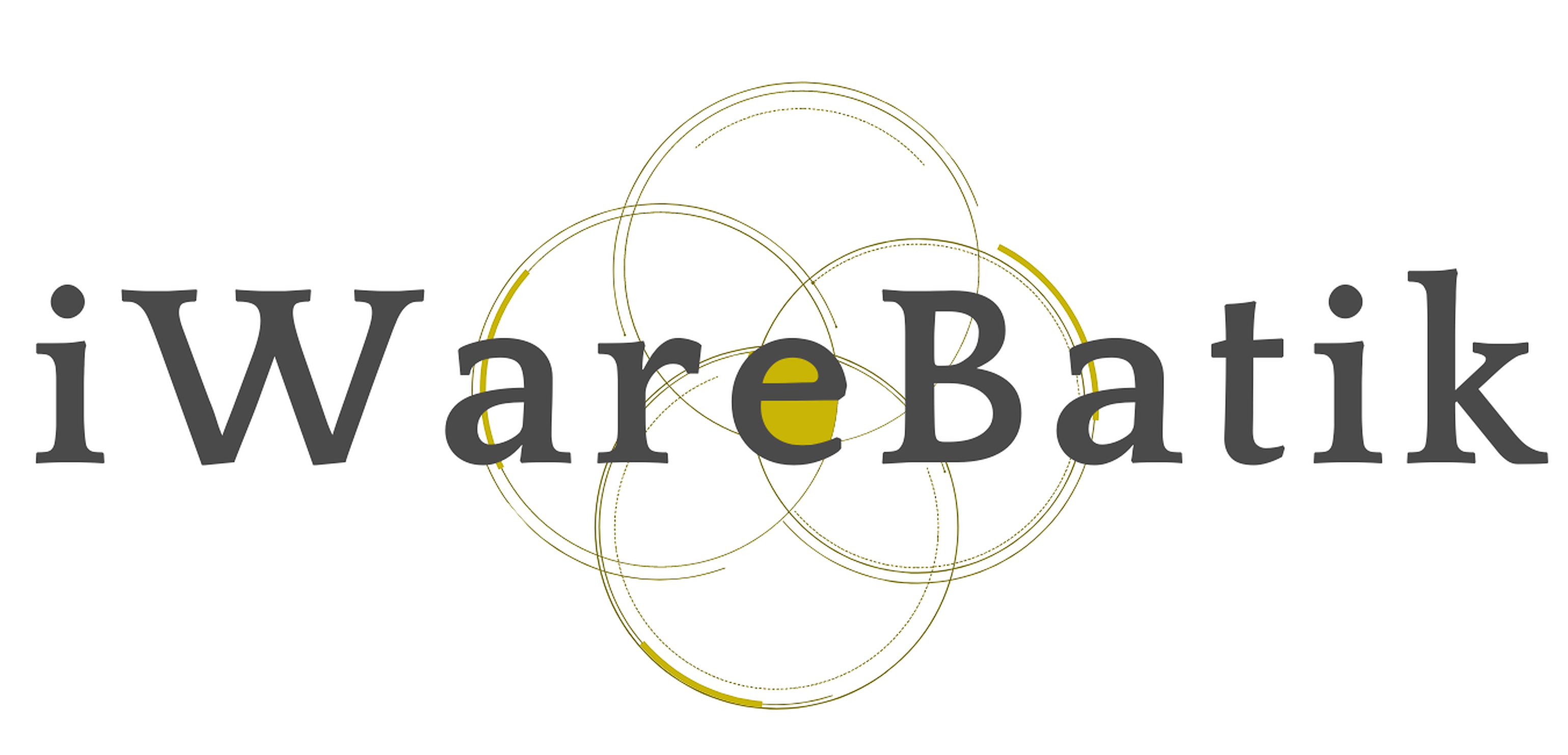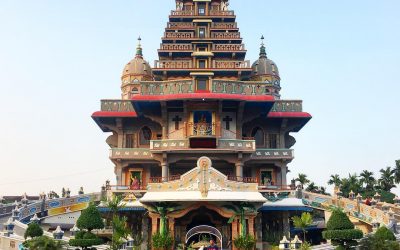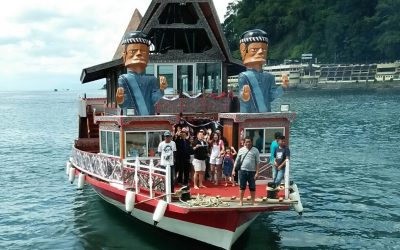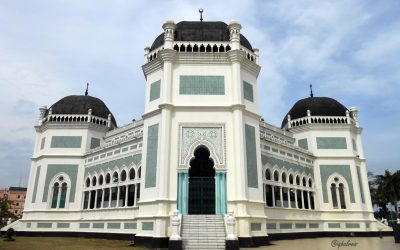Home / Batik Regions – Western Indonesia – Northern Sumatra – North Sumatra / Samosir Island – Toba Lake
Cultural Destination
Embrace the spirit of the place!
Huta Siallagan – Samosir Island
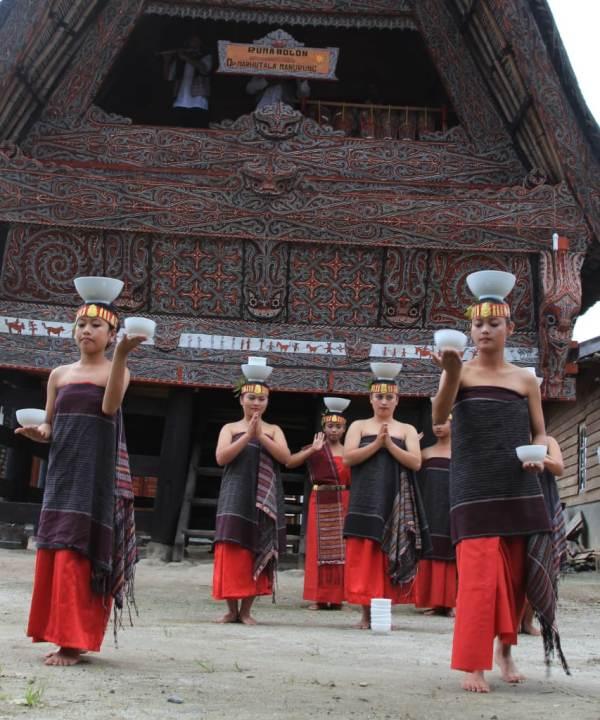
The traditional dance of Samosir island (photo: netralnews)
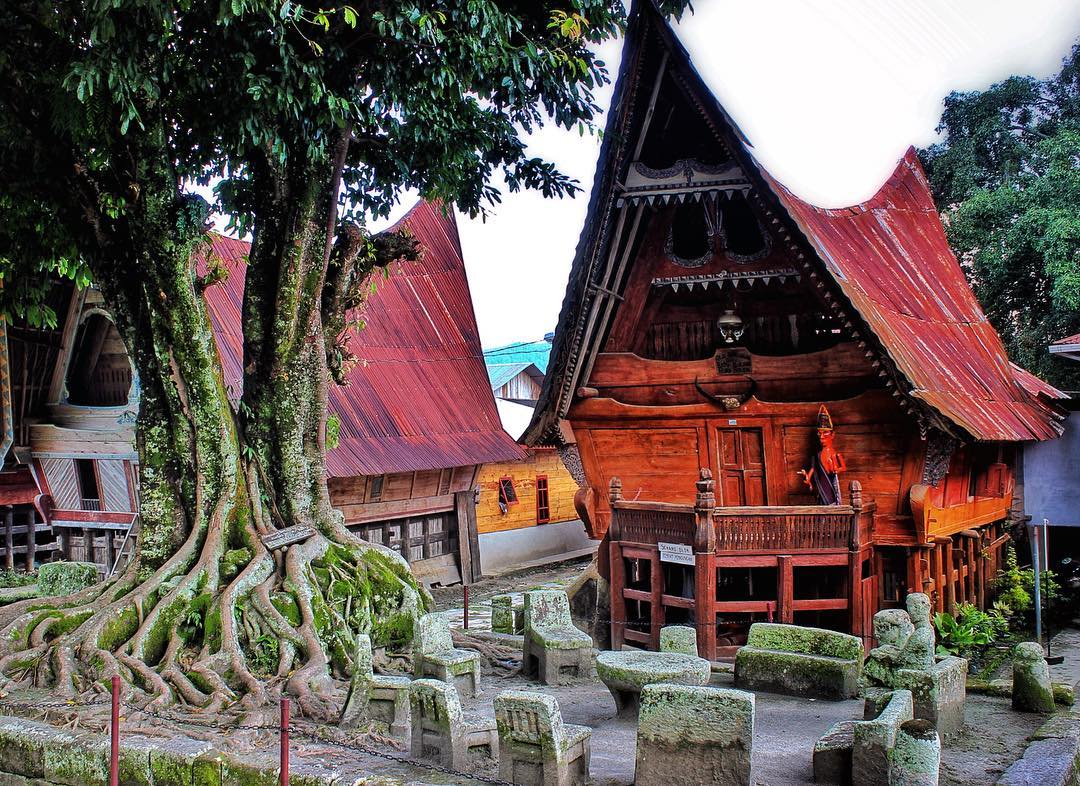
The Batu Pasidangan and Samosir traditional house (photo: @Yusantaavi)
Toba Lake – Samosir Island
The historical Toba Lake has never deprived of cultural amusement. It has an iconic ancient village that exudes a unique culture of the Batak ethnic group. Visiting this place, you will feel the sensation of traveling back in time. Tourists can visit ancient Batak traditional settlements with their two-meter high stone walls, as well as watch the ritual ceremonies of the local people. You could also overlook the breathtaking panoramic view of Lake Toba, the largest volcanic lake in the world.
Tourist Attractions in North Sumatra
Maria Annai Velangkani Catholic Church
The unique church building was made for and by Catholics of Tamil Indian descendants in
Floating Batak House
The boat tours that adopt the concept of floating Batak house. With this boat,
Al Mashun Historical Mosque of Medan
This mosque was built during the reign of Sultan Ma’mun Alrasyid Perkasa Alam in
North Sumatra
Batik Motifs
Desa Na Tolu
The Desa Na Tolu characteristic pattern symbolizes the Batak philosophy of existence and
Gorga Simeol-Meol
The Gorga Simeol-meol is a pattern of plant tendrils. it is regarded as a symbol of longevity and
Discover
Indonesian
Batik
Motifs
Pattimura
Pattimura is the name of an Indonesian hero who fought against colonialism in
Hiu Taliyasan
Indonesia is also home to the world’s largest fish, the whale shark (Rhincodon typus). Hiu Taliyasan refers to
Pati-Pati Pinehiku
It symbolizes the hierarchy in society and the social status of the Mekongga
Tifa Totobuang
The batik motifs illustrate Maluku’s traditional music instrument called
Sandeq
Sandeq Boat is a symbol of the maritime importance of the West Sulawesi region. The greatness of
Sero Tangga
The Sero Tangga illustrates an endearing feeling and sacrifices of a person to fulfil
Gonggong Siput
Gonggong (Strombus Turturella) is one type of sea snail found around
Rumah Mamuju
the Batik motif illustrates the house of Mamuju King with the stairs, located on the left of the wooden stage house
Sekar Jati
Sekar means flower and Jati refers to teak trees that symbolizes a strong mental character that
Angsa Duo
According to legend, the Angso duo batik motif is a pair of swans that are believed to have led Princess
Daun Simpor
This motif is inspired by the Simpor plant (Dillenia Suffruticosa) which is a typical
Kaganga Tanah Rejang
If Batik Besurek combines Arabic calligraphy motifs, then the Kaganga batik takes
Ake Patra
Ake is related to the divinity and the composition of the universe. It is a symbol of
Parang Seling
Parang Seling or “alternating daggers” is a royal batik motif. It is a feminine variant of
Pucuk Rebung Riau
Pucuk Rebung symbolizes heart determination in achieving goals, good luck, and
Malinau Cultural Festival
You will witness a unique competition that might not be found other than in
Gigi Haruan Lidi
The Gigi Haruan Lidi motif is taken from the name of the cork fish and is a symbol of
Singayaksa
The Singayaksa motif comes from the name of a place where Sultan Hasanuddin used to
Parang Rusak
Another meaning behind this motif is an unconquerable spirit, symbolized by
Kuda Kupang
Horses symbolize wealth. It contains noble values of virtuous characters that bring
Kaharingan
The Kaharingan or ‘tree of life’ based on the Dayak tribes’ belief system. This tree symbolizes
Tanah Liek
The word “Tanah Liek” refers to clay in Minang language. It is also known as
Cengkeh
The clove flower motif is the main commodity of the Tolitoli Regency. This motif represents
Prada Papua
The word “Prada” in the Javanese-Indonesian dialect means a batik textile that
Bekantan Pakis
This motif represents Pakis Haji (Polystichum setiferum), an endemic plant in
Besurek Rafflesia
The term “Basurek” refers to a textile that contains letters or inscriptions
Ukir Sentani
The Ukir motif is a batik motif that is inspired by various traditional Sentani wood carvings
Bomba Mawar
This motif means sacred love for family, kingdom, and God; It also illustrates
Manguni Minahasa
Manguni is identified as the symbol of the Minahasa people. Manguni is known as a
Kerawang Tegak Aceh
The Vertical Upright (Kerawang Tegak) Motif symbolizes a person who has a strong
Jupri Kembang Teh
Kembang Teh illustrates the tendrils of tea plants that grow in the highlands of
Karawo Mahkuta
Mahkuta refers to Gorontalo’s traditional crown. It represents noble characters of
Bale Lumbu
This motif signifies the welfare of the ancient Sasak society. Bale also symbolizes the
Keluak Daun Pakis
The word “Keluak” is a Minang language which means twisted or tangled. The Motif of
Paqbarre Allo
The word “Barre” means round and “Allo” means the sunlight. This motif is interpreted as
Karawo Pinang
Pinang refers to the Palm areca tree. This motif is considered as the original
Tongkonan
Toraja’s traditional house is called Tongkonan. Tongkonan is a place for
Teguh Bersatu
This batik motif shows the strength of the people of Kupang. It also represents a sense of
La Galigo
La Galigo is a literary work of the Buginese Epic that has 300 thousand epic lines. It is considered even
Pinawetengan
The Pinawetengan Batik pattern was taken from a prehistoric inscription in
Kain Cual
Cual textile tradition has existed since the 17th century. The word “Cual” refers to
Buketan Bali
The Balinese bouquet (Buketan Bali) is a floral arrangement and the name is
Leuit Sijimat
This motif reflects the daily activities of the Baduy tribe in Banten. The main ornaments of batik motif consist of:
Tengkawang Ampiek
With its many advantages, the Dayaks use this leaf in ritual ceremonies. This plant is a symbol of
Biji Kopi
The coffee seeds motif illustrates the pride of local coffee specialities in
Enggang Dayak
Local people beliefs that hornbills are an incarnation of the Commander of the Birds. It has supernatural
Awan Berarak
Awan Berarak is a combination of Dayak motifs and Malay patterns. The word ‘Awan Berarak’ means the
Sido Mulyo
Sidomulyo is one of the classical motifs, which is specifically used for the bride’s costume in
Tampuk Manggis Sasirangan
The motif illustrates the philosophy of the mangosteen fruit, which is
Kasih Tak Sampai
‘Kasih Tak Sampai’ is an idiom in the Indonesian language which refers to
Bintik Tujuh
The Bintik Tujuh (Seven Dots) motif has 7 white spots and green color gradation as
Wirasat
Wirasat or divine inspiration is a gift from God. This inspiration is symbolized by
Daun Sirih
This motif illustrates betel leaves that are used by Lombok communities as traditional
Salakanagara
Salakanagara batik motif illustrates the first kingdom in the Betawi land
Desa Na Tolu
The Desa Na Tolu characteristic pattern symbolizes the Batak philosophy of existence and
Rangkiang
The word “Rangkiang” refers to the rice granary in the Minangkabau language. It symbolizes
Gorga Simeol-Meol
The Gorga Simeol-meol is a pattern of plant tendrils. it is regarded as a symbol of longevity and
Tubo Kelapa
Coconut tree is a symbol of a good character and strong mentality. It illustrates the more success a person, the more
Taiganja
Taiganja is a precious gold pendant that shows the social status of the Kaili family. It is
Merak Ngeram
The hatching peacock motif has a very deep meaning which refers to the sacrifice and
Mahkota Siger
Siger is the crown of a noblewoman in ancient time. It is a symbol of femininity, strength, and
Tabir Tanjung
Tanjung flower is a type of Cherry tree flower, which is commonly found in
Ikan tambal
The word “Ikan” refers to fish. The philosophical meaning of Ikan Tambal means is
Jumputan Bintang
The word Jumputan means the tie-dye technique, while the word “Bintang” refers to
Lontara
The Lontara script itself is a typical ancient script of Bugis and Makassar communities. History records that
Insang Ikan
Insang refers to the gills of the fish. This is a typical pattern of Malay ethnic who inhabits
Gumin Tambun
Based on Hindu mythology, this motif symbolizes lucks, abundant wealth, and
Gurdo Solo
Gurdo or garuda bird is the mount of the Indian god Vishnu. As the Sun Bird,
Sekomandi
Its philosophical meaning is the eternal union which refers to a saying “until death do us part”
Kawung
The Kawung motif was created by Sultan Agung Hanyokrokusumo (1593 – 1645) as a symbolic gift for
Wakatobi
It symbolizes the coastal beauty of the Wakatobi island and the symbol of Patra symbolizes
Gonggong Beruntun
This motif illustrates that a person should maintain a positive attitude and
Gedhog Kembang Waluh
a combination of Javanese cultural motif of the Majapahit kingdom (XII-XIV century) with
